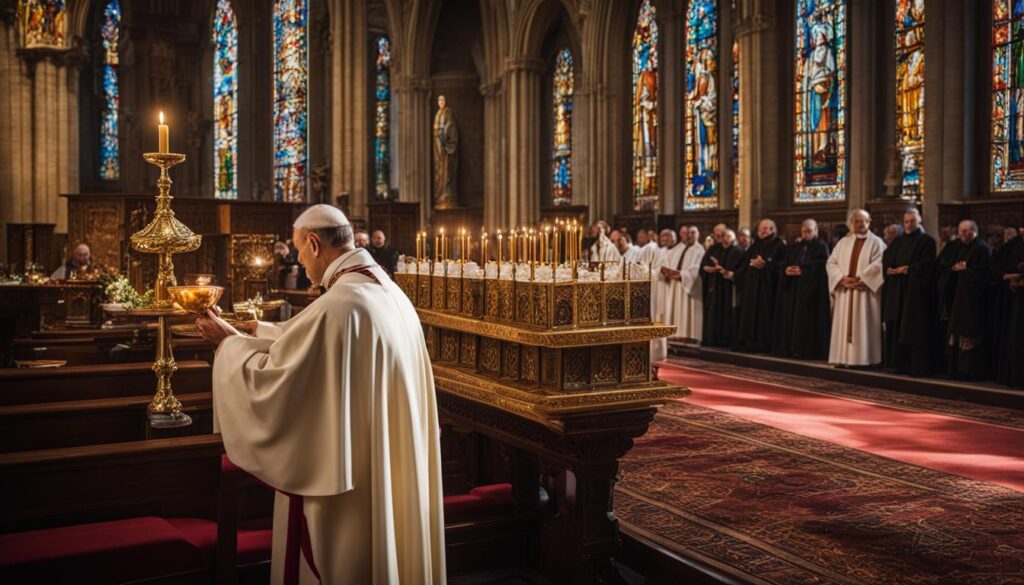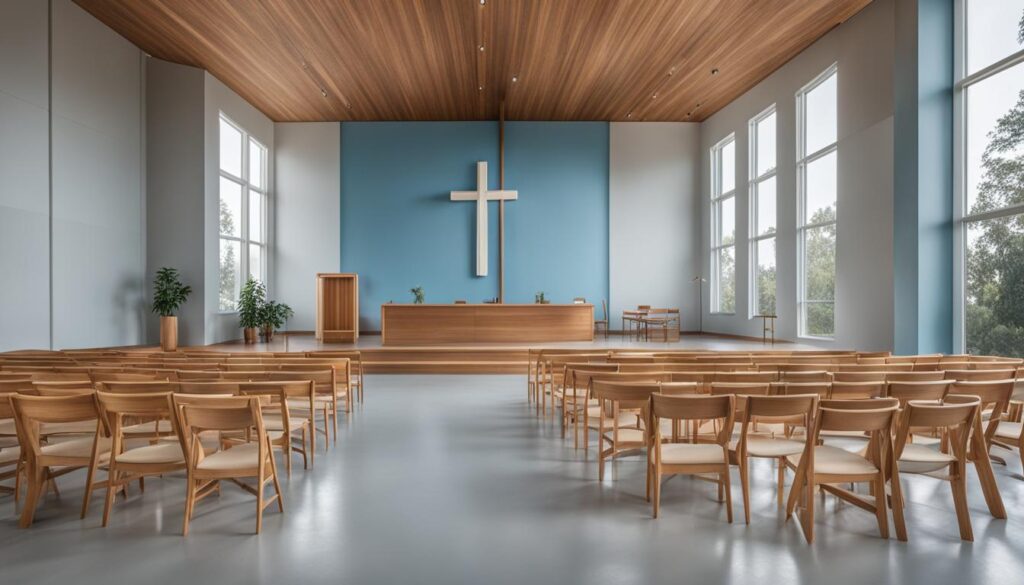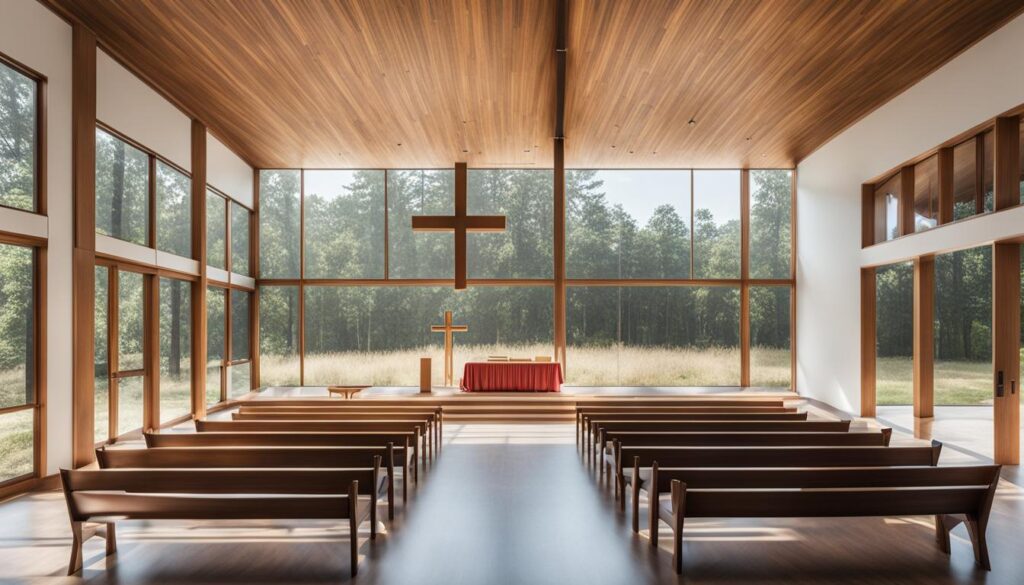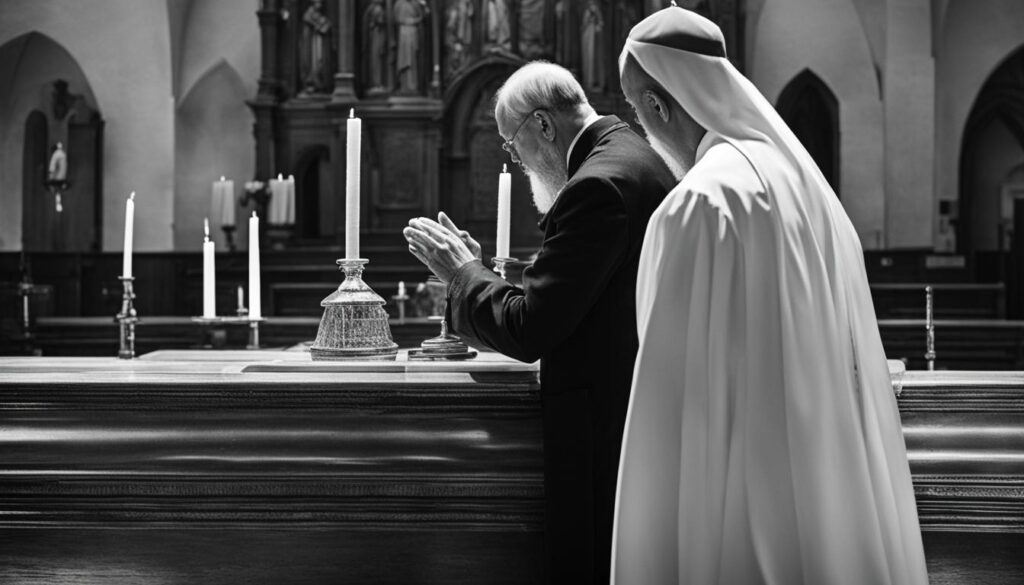The use of holy water in religious practices is often associated with Catholicism, but the question of whether Protestants can use holy water is a complex one. Protestant beliefs and practices vary widely, and some denominations do incorporate the use of holy water in their worship rituals. It is important to delve into the specific beliefs and traditions of different Protestant denominations to understand their stance on the use of holy water.
In this article, we will explore the history of Protestant iconoclasm, the views of different Protestant denominations on sacraments and holy water, and the differences in holy water use between Catholic and Protestant traditions. We will also discuss the architecture of Protestant worship spaces and the contemporary practices and adaptations in Protestant churches today.
Key Takeaways:
- The use of holy water in Protestantism varies among different denominations.
- Protestant views on sacraments and holy water differ from those of Catholics.
- Protestant worship spaces are characterized by simplicity and emphasis on preaching and congregational participation.
- Contemporary Protestant churches have adapted to modern trends and practices.
- Each Protestant denomination and congregation may have their own specific beliefs and practices regarding holy water.
The History of Iconoclasm in Protestantism
The Protestant Reformation in the 16th century was a transformative period in religious history. As the Catholic Church faced growing criticism and corruption, a movement led by reformers such as Martin Luther and John Calvin emerged, seeking to purify and restore the church based on biblical teachings. This period was marked by a phenomenon known as iconoclasm, which involved the destruction and removal of religious images and statues from churches.
Protestants viewed these icons as symbols of superstition and idolatry, considering them to detract from the true worship of God and the teachings of the Bible. Iconoclasm became a way for Protestants to express their rejection of what they perceived as Catholic idol worship and a return to a more authentic and scripturally based form of worship. As a result, Protestants engaged in acts of religious violence, breaking into Catholic churches to destroy images and statues.
The historical context of iconoclasm is essential in understanding Protestant views on religious practices, including the use of holy water. This period of religious upheaval and the rejection of Catholic traditions laid the foundation for the diverse beliefs and practices regarding religious rituals, sacraments, and symbols observed in different Protestant denominations today.
Religious Violence and Transformation
- Iconoclasm was a violent expression of Protestant reformers’ rejection of Catholic practices.
- Protestants saw religious images as superstitions and distractions from biblical teachings.
- Iconoclasm led to widespread destruction of religious art and violence between Protestants and Catholics.
The Legacy of the Protestant Reformation
- The Protestant Reformation shaped the beliefs and practices of various Protestant denominations.
- Protestant views on religious rituals, including the use of holy water, differ widely.
- Understanding the history of iconoclasm helps illuminate Protestant perspectives on religious symbols and practices.
Protestant Views on Sacraments and Holy Water
Protestant denominations hold varying views on sacraments, with baptism and the Lord’s Supper being the most commonly recognized. These sacraments hold significant symbolic and spiritual meaning for Protestants, representing initiation into the Christian faith and the participation in the body and blood of Christ. While some denominations, like the Quakers, do not practice any sacraments at all, others, such as Lutherans and Anglicans, emphasize the importance of these rituals in their worship.
In Reformed Christianity, influenced by the teachings of Huldrych Zwingli, the use of holy water is not considered essential. The emphasis is placed on the authority of scripture, and since the Bible does not explicitly mention the use of holy water, Reformed Christians may view it as unnecessary for their faith practices.
On the other hand, Lutherans and Anglicans incorporate holy water into their worship rituals, albeit with different interpretations. For Lutherans, holy water is used to symbolize cleansing and renewal, reflecting the belief in the transformative power of God’s grace. Anglicans also use holy water in their worship, drawing inspiration from Catholic liturgy and traditions. In these denominations, holy water serves as a reminder of baptism and the cleansing of sins.
Baptism: A Sacrament of Initiation
Baptism plays a central role in many Protestant traditions, signifying the initiation into the Christian faith and the welcoming of individuals into the community of believers. Protestants believe that through baptism, individuals are cleansed of original sin and receive the gift of the Holy Spirit. While baptism practices may vary between different denominations, the underlying significance remains the same – the sacrament represents the believer’s commitment to follow Christ and live a life in accordance with Christian teachings.
Each Protestant denomination approaches baptism differently. Some practice infant baptism, viewing it as a covenant between God and the child’s parents, who promise to raise the child in the Christian faith. Others practice believer’s baptism, where individuals are baptized after making a personal profession of faith. Regardless of the mode or timing of baptism, it holds a special place in Protestant theology and is seen as an integral part of the Christian journey.
The Lord’s Supper: Remembering the Sacrifice of Christ
The Lord’s Supper, also known as communion or the Eucharist, is another important sacrament in Protestant worship. This ritual commemorates the Last Supper of Jesus Christ with his disciples, symbolizing the sacrifice of Christ’s body and blood for the forgiveness of sins. Protestants believe that through participating in the Lord’s Supper, they are spiritually nourished and united with fellow believers.
The manner in which the Lord’s Supper is practiced varies among Protestant denominations. Some churches celebrate it weekly, while others do so monthly or on special occasions. The symbolic elements used in the Lord’s Supper, such as bread and wine or grape juice, also differ according to denominational traditions. However, the core purpose remains the same – to remember and honor the sacrifice of Christ and to partake in the spiritual sustenance offered through this sacrament.
Differences in Holy Water Use Between Catholic and Protestant Traditions

The use of holy water differs between Catholic and Protestant traditions. In Catholicism, holy water plays a significant role in various religious practices, such as blessings, sacraments, and purification rituals. It is considered a sacramental and is associated with the sanctification of both people and objects within the church.
Anglican traditions, while more aligned with Catholic worship style, also incorporate the use of holy water in a similar manner. However, it should be noted that many Protestant denominations do not include holy water in their worship practices, opting for a simpler aesthetic in their sacred spaces.
Differences in Catholic and Protestant Practices:
- In Catholicism, holy water is used for blessings, purification, and sacraments.
- Anglican traditions also use holy water as part of their worship rituals.
- Many Protestant denominations do not incorporate holy water into their worship practices.
In Catholicism, holy water is considered a symbolic representation of spiritual cleansing and renewal. It is often used by worshippers to make the sign of the cross upon entering the church as a way to remind themselves of their baptism and to seek God’s blessings.
In contrast, Protestant traditions tend to prioritize a simpler aesthetic within their worship spaces. This emphasis on simplicity is reflected in their limited use of holy water, if any. Protestant churches often focus on the centrality of preaching and personal relationship with God, emphasizing faith over rituals or sacramentals.
Protestant Worship Spaces and Architecture

Protestant worship spaces are known for their simplicity and emphasis on the preaching of the Bible. Unlike the ornate and elaborate architecture of Catholic and Orthodox churches, Protestant churches often have a more minimalistic design. The focus is on creating a space that allows for a direct and personal connection with God through the study and understanding of scripture.
One prominent feature of many Protestant worship spaces is the pulpit. Positioned prominently in the front, the pulpit is where the pastor or minister delivers sermons and teachings. It serves as a visual reminder of the centrality of the Word of God in Protestant worship.
The Lord’s Table, where the sacrament of the Lord’s Supper is celebrated, is another important element in Protestant churches. It may be placed below or to the side of the pulpit, symbolizing the importance of communion and the sharing of the bread and wine. The architecture of the worship space often reflects the significance of these elements, providing a focal point for congregants to engage with the sacrament.
Key Features of Protestant Worship Spaces:
- Simple and minimalistic design
- Prominent placement of the pulpit
- The Lord’s Table positioned below or to the side of the pulpit
- Focus on congregational participation and engagement
In terms of architectural style, Protestant churches can vary. Some adhere to traditional styles such as Romanesque and Gothic, while others embrace more contemporary designs. The overall goal is to create a worship space that facilitates a meaningful and authentic worship experience for the congregation.
Contemporary Protestant Practices and Adaptations

Contemporary Protestant churches have embraced various practices and adaptations to meet the needs of modern worshippers. From unconventional worship spaces to interactive worship experiences, these churches are finding innovative ways to engage their congregations.
One adaptation seen in contemporary Protestant churches is the rise of house churches. These intimate gatherings take inspiration from the early Christian practice of meeting in homes for worship. House churches offer a more casual and personal environment, allowing for deeper connections among the attendees.
Amphitheater-style worship spaces have also gained popularity in contemporary Protestant churches. With a stage at the center and seating arranged in a circular or semi-circular layout, these spaces facilitate greater interaction between the congregation and worship leaders. The design creates a sense of community and encourages active participation in the worship experience.
Key Points:
- Contemporary Protestant churches have adapted to modern trends and practices.
- House churches provide a more intimate and personal environment for worship.
- Amphitheater-style worship spaces encourage active participation and a sense of community.
Conclusion
The question of whether Protestants can use holy water is a nuanced one that requires an understanding of the diverse beliefs and practices within Protestantism. While some denominations incorporate holy water into their worship rituals, others do not view it as essential to their faith. Exploring the history of iconoclasm, the views on sacraments, and the differences between Catholic and Protestant traditions can shed light on the use of holy water in Protestantism.
Protestant beliefs on sacraments vary, with some denominations emphasizing the importance of faith and personal relationship with God over sacramental practices. Reformed Christians may view holy water as unnecessary since it is not explicitly mentioned in scripture, while Lutherans and Anglicans may incorporate it in their worship rituals to symbolize cleansing and renewal.
In conclusion, each Protestant denomination and congregation will have their own specific beliefs and practices regarding holy water. The question of whether Protestants can use holy water cannot be definitively answered, as it depends on the specific denomination and its interpretation of scripture and tradition. Exploring religious practices within Protestantism provides valuable insights into the diverse perspectives on the use of holy water among Protestants.
FAQ
Can Protestants use holy water?
The use of holy water in religious practices is complex among Protestants. Some denominations incorporate holy water in their worship rituals, while others do not view it as essential. It varies depending on the specific beliefs and traditions of each Protestant denomination.
What is the history of iconoclasm in Protestantism?
The Protestant Reformation in the 16th century brought about a wave of iconoclasm, where religious images, statues, and paintings were removed or destroyed from churches. This was due to the belief by Protestants that these icons had replaced the centrality of the Bible in Catholic worship.
How do Protestants view sacraments and holy water?
Protestant denominations generally recognize two sacraments, baptism and the Lord’s Supper, although some, like the Quakers, do not practice any sacraments. The significance of holy water for Protestants varies among different denominations. Reformed Christians may view it as unnecessary, while Lutherans and Anglicans may incorporate it as a symbol of cleansing and renewal.
What are the differences in holy water use between Catholic and Protestant traditions?
In Catholicism, holy water is used for blessings, sacraments, and purification rituals. It is considered a sacramental and associated with the sanctification of people and objects. Anglicans may use holy water similarly to Catholics, while many Protestant denominations do not incorporate it into their worship practices.
What is the characteristic of Protestant worship spaces and architecture?
Protestant worship spaces prioritize the preaching of the Bible, with the pulpit placed prominently. The Lord’s Table, where the Lord’s Supper is celebrated, may be positioned nearby. The architecture varies, ranging from traditional designs to more contemporary styles. Simplicity and the participation of the congregation in worship are often emphasized.
How have contemporary Protestant churches adapted to modern trends?
Some contemporary Protestant churches start as house churches, while others rent storefronts or unconventional spaces for worship. Many adopt a more casual and informal style, incorporating rock bands, multimedia presentations, and interactive elements. Worship spaces are designed with an amphitheater-like layout to facilitate engagement and participation.
What is the conclusion regarding the use of holy water among Protestants?
The question of whether Protestants can use holy water is not easily answered, as beliefs and practices vary widely among different denominations. Understanding the historical context of iconoclasm, Protestant views on sacraments, and the differences between Catholic and Protestant traditions can provide insight. Ultimately, each denomination and congregation will have their own specific beliefs and practices regarding holy water.

